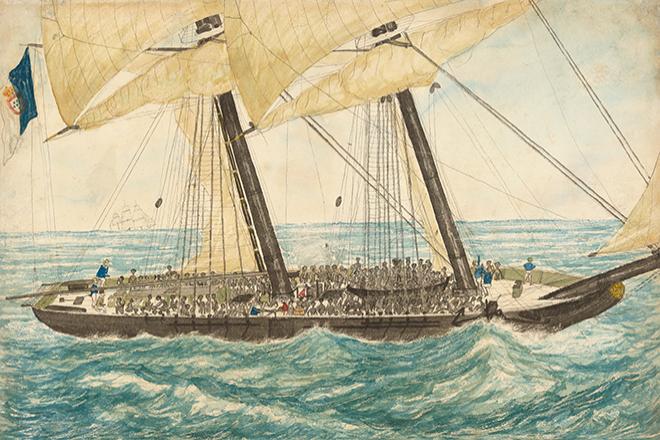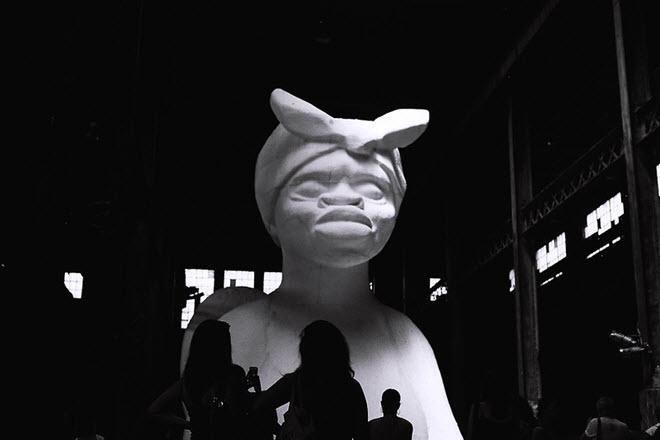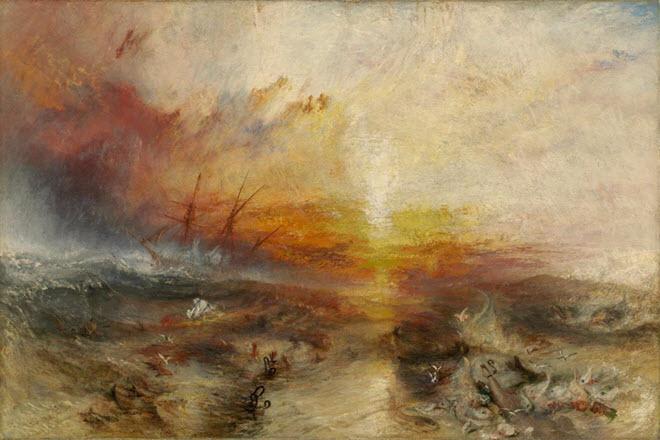Artistic Responses to the Zong Massacre (1781)
Resource Description
Suitable for introductory or humanities survey courses, this module offers teaching resources for a unit on the 1781 Zong massacre. It focuses on artistic responses to the massacre and on how the massacre is a representative event of the Transatlantic Slave Trade. The module includes artworks and texts that could be used in the classroom, discussion questions and activities, and a culminating writing prompt. This module invites students to reflect on the gaps in the colonial archive and to think about the role of art and literature in shaping understandings of historical events. It also provides students with an opportunity to recognize how the dehumanizing logic of slavery shaped modernity and how black artists challenge its legacy through their work.
Learn moreModernity Unmoored: Ships as Material and Metaphor

Credit: Lieutenant Henry Samuel Hawker, The Portuguese slaver Diligenté captured by H.M. Sloop Pearl with 600 slaves on board, taken in charge to Nassau, May 1838. Collection of the Smithsonian National Museum of African American History and Culture.
Resource Description
This series of modules approaches ‘ships’ and ‘boats’ as material and metaphor for thinking about migratory experiences and the movement of peoples, goods, and commodities, as they relate to the idea of modernity on a local, transnational, and planetary scale. The modules focus on literary, visual, and cinematic representations of ships and boats as a basis for engaging in comparative work. Ships and boats are considered not just as physical objects, but as technologies and symbolic objects that speak to the dynamics of circulation and/or extraction in the context of slavery, colonialism, and global capitalism. The modules underscore the role they have played in the establishment and subversion of racial, cultural, economic, and political divides across space and time.
Learn moreSugar and Servitude: The Taste of Color

Credit: Kara Walker's "A Subtlety" by metacynic is licensed under CC BY 2.0
Resource Description
This module provides resources for teaching about the artistic practice of Kara E. Walker and its interrogation of whiteness and race. Materials also support teaching an overview of the history of the production, consumption, and meanings of sugar, particularly as that history has contributed to the Transatlantic slave trade and continues to depend upon coercive labor practices in the U.S. and globally. Included is a list of artworks produced by Walker that touch specifically on sugar and links to videos of the artist describing aspects of her practice; academic and literary texts that can inform students’ ability to read Walker’s complex visual texts; discussion questions and classroom activities to further their engagement with the material; and ideas for culminating projects.
Learn more
